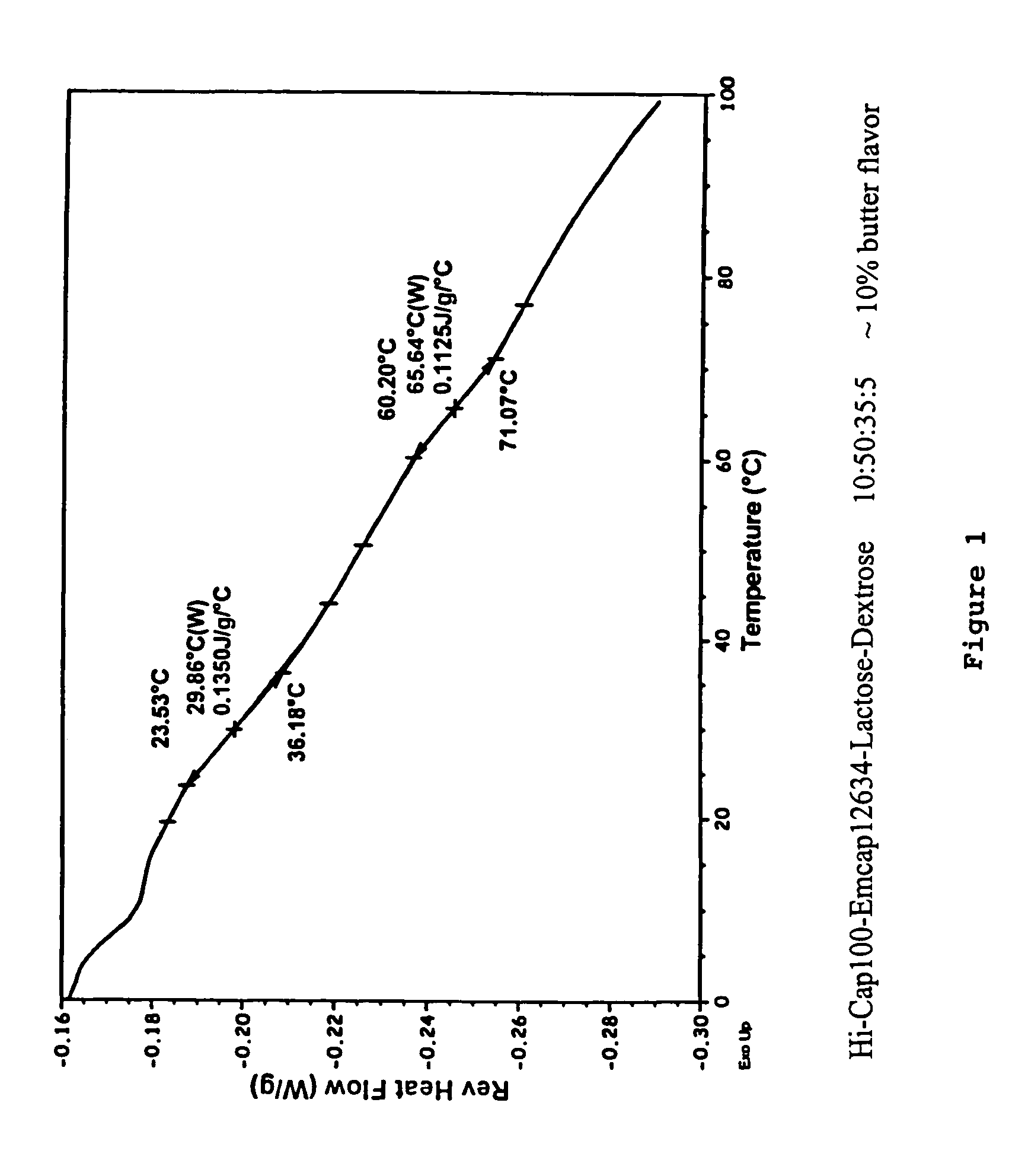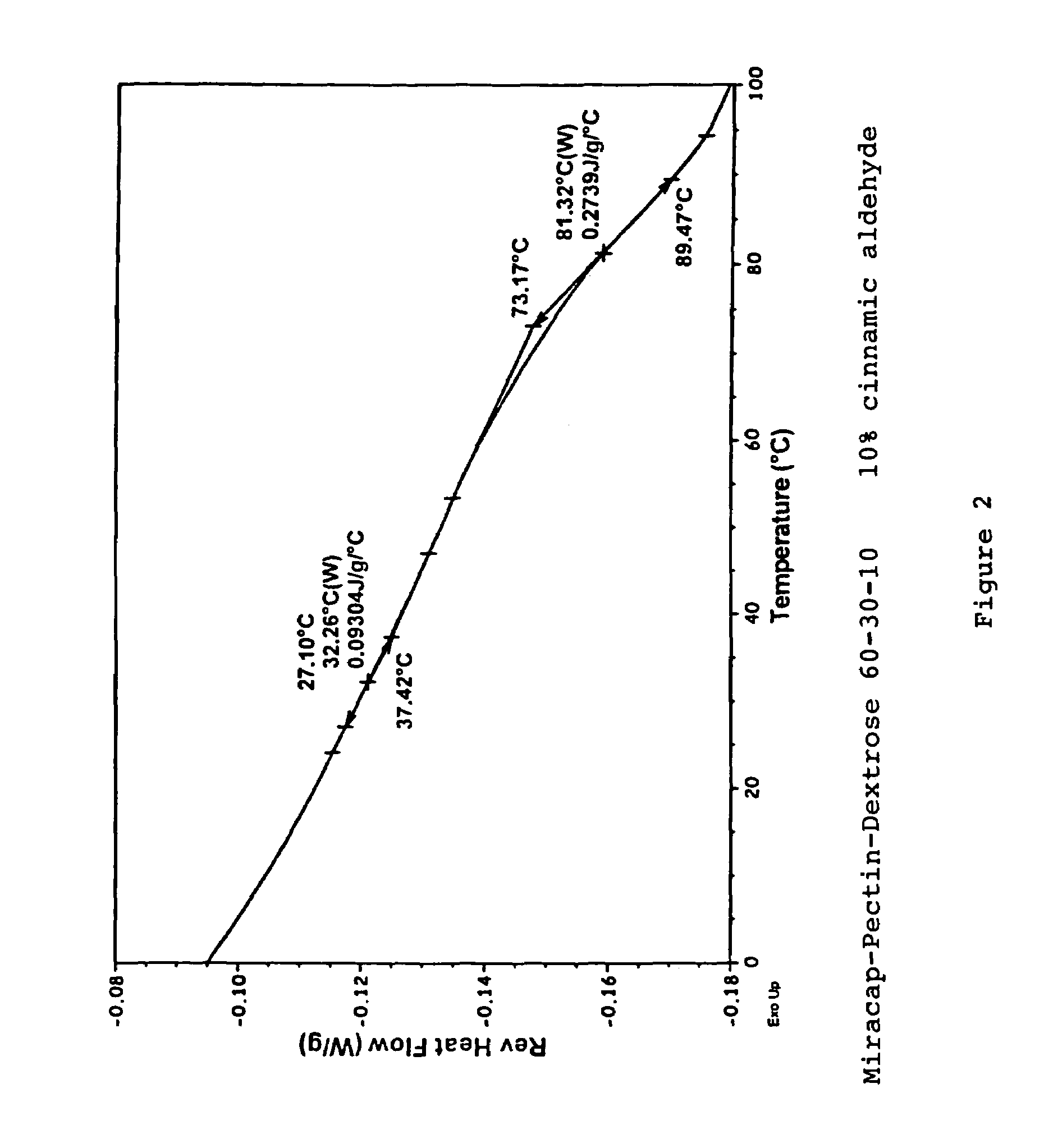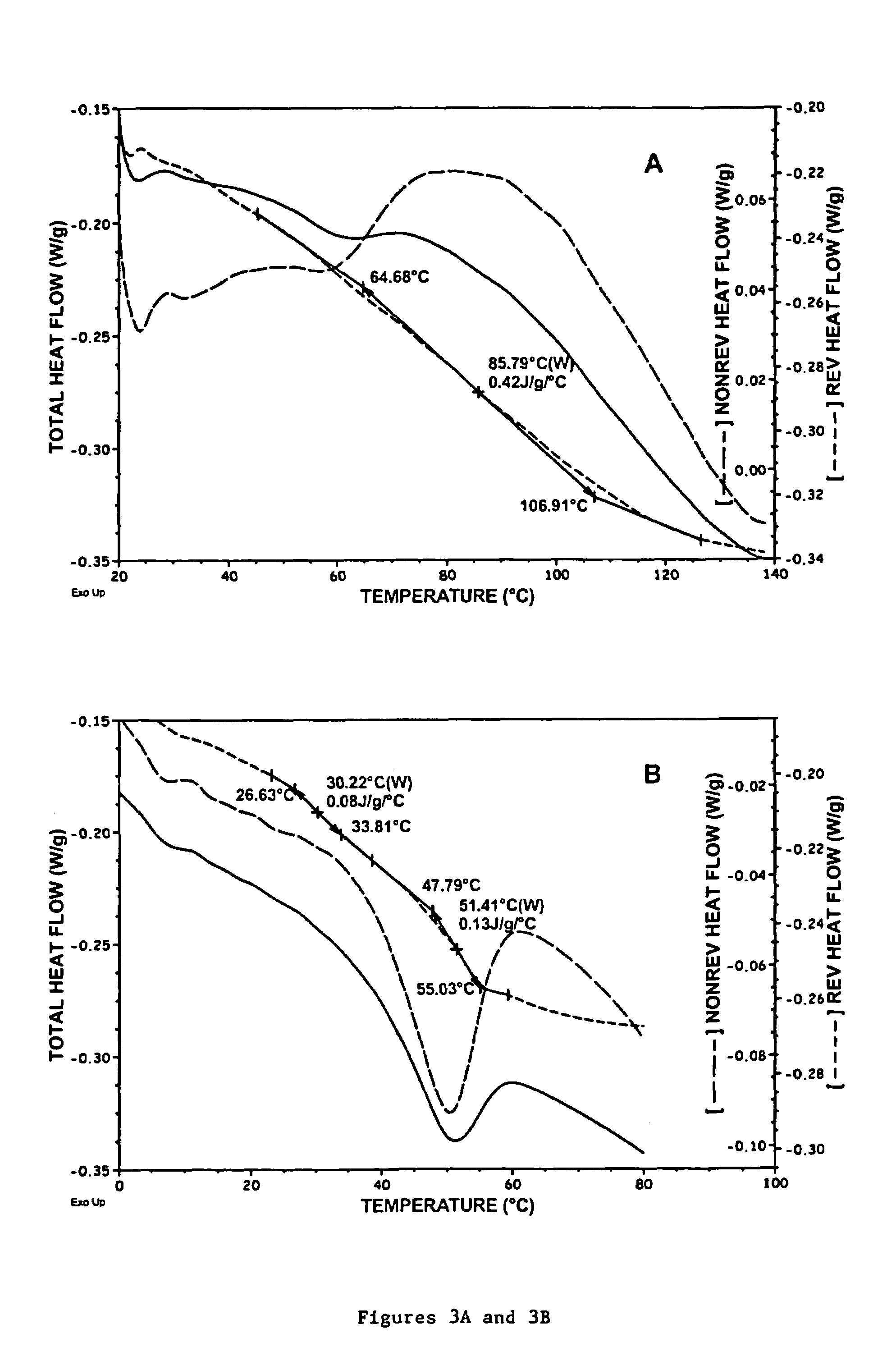Encapsulation compositions and processes for preparing the same
a technology of composition and encapsulation, applied in the field of encapsulation composition, can solve the problems of complex or natural flavor mixture components of complex or natural flavor mixtures that exhibit high vapor pressure, are lost or disproportionately disproportionate, and are currently used in commercial processes leading to stable results
- Summary
- Abstract
- Description
- Claims
- Application Information
AI Technical Summary
Benefits of technology
Problems solved by technology
Method used
Image
Examples
examples 1-5
Materials and Methods
[0167]Melt extrusion was accomplished utilizing a laboratory 2″ co-rotating twin-screw extruder incorporating oil jacket heating, fitted with a liquid injection port in the feeding zone of the unit, and utilizing a 0.031″ multi-orifice die. A matrix composition consisting of pre-blended food polymer(s) and carbohydrate was metered into the feed port at a feed rate between 100 to 130 grams / minute of solids; the water (plasticizer) liquid stream was delivered to the feed port by a metering peristaltic pump at approximately 3-8 ml / minute. The jacket temperature was set at 250° F. Liquid flavors were prepared as concentrates: a lipid-based flavor, “lemonade,” utilizing a lemon citrus oil base and a compounded peach flavor. In some cases, an emulsifier, such as polysorbate 60 (polyoxyethylene [20] sorbitan monostearate), was added to the flavor at 0.5 to 5% (w / w emulsifier / flavor). After lining out the feed and conveying rates and bringing the unit into a steady-stat...
example 1
[0168]A carbohydrate composition consisting of 75 parts OSAN-starch (Miracap, A.E. Staley Company), 20 parts OSAN-starch (Hi-Cap 100, National Starch and Chemical Co.), and 5 parts dextrose monohydrate (Clintose, ADM) was fed at a rate of 114 gm / min into the extruder. Deionized water was metered into the feed port at 8 gram / min. The extruder jacket temperature was maintained at 250° F. A butter flavor containing 5% of Polysorbate 60 emulsifier (polyoxyethylene[20] sorbitan monostearate) was metered into the mix at 13.0 gm / min. The encapsulate composition was extruded through a die without puffing and the resulting solid cooled by a cold airflow to yield a brittle solid in approximately 2 to 3 seconds. The resultant solid was characterized by MDSC (modulating differential scanning calorimetry) as a glass with two Tg transitions: the first exhibited a Tg(1) of 17.7° C. and a ΔCp (reversing transition) of 0.06 J / gm / ° C. and the second Tg(2) of 39.3° C. and a ΔCp (reversing transition) ...
example 2
[0169]A carbohydrate composition consisting of 60 parts OSAN-starch (Miracap, A.E. Staley Company), 30 parts high methoxy pectin (RS461, Danisco), and 10 parts Dextrose (Clintose, ADM) was fed at a rate of 114 gm / min. Deionized water was metered into the feed port at 3 gram / min. The extruder jacket temperature was maintained at 250° F. A cinnamic aldehyde flavor containing 5% of Polysorbate 60 emulsifier (polyoxyethylene[20] sorbitan monostearate) was metered into the mix at 7.9 gm / min. The encapsulate composition was extruded through a die without puffing and the resulting solid cooled by a cold airflow to yield a brittle solid in approximately 3 seconds. The resultant solid was characterized by MDSC as a glass with two Tg transitions. The Tg(1) was 32.3° F. with a ΔCp (reversing transition) of 0.09 J / gm / ° C. The Tg(2) was 81.3° F. and the ACp (reversing transition) was 0.28 J / gm / ° C.
PUM
 Login to View More
Login to View More Abstract
Description
Claims
Application Information
 Login to View More
Login to View More - R&D
- Intellectual Property
- Life Sciences
- Materials
- Tech Scout
- Unparalleled Data Quality
- Higher Quality Content
- 60% Fewer Hallucinations
Browse by: Latest US Patents, China's latest patents, Technical Efficacy Thesaurus, Application Domain, Technology Topic, Popular Technical Reports.
© 2025 PatSnap. All rights reserved.Legal|Privacy policy|Modern Slavery Act Transparency Statement|Sitemap|About US| Contact US: help@patsnap.com



